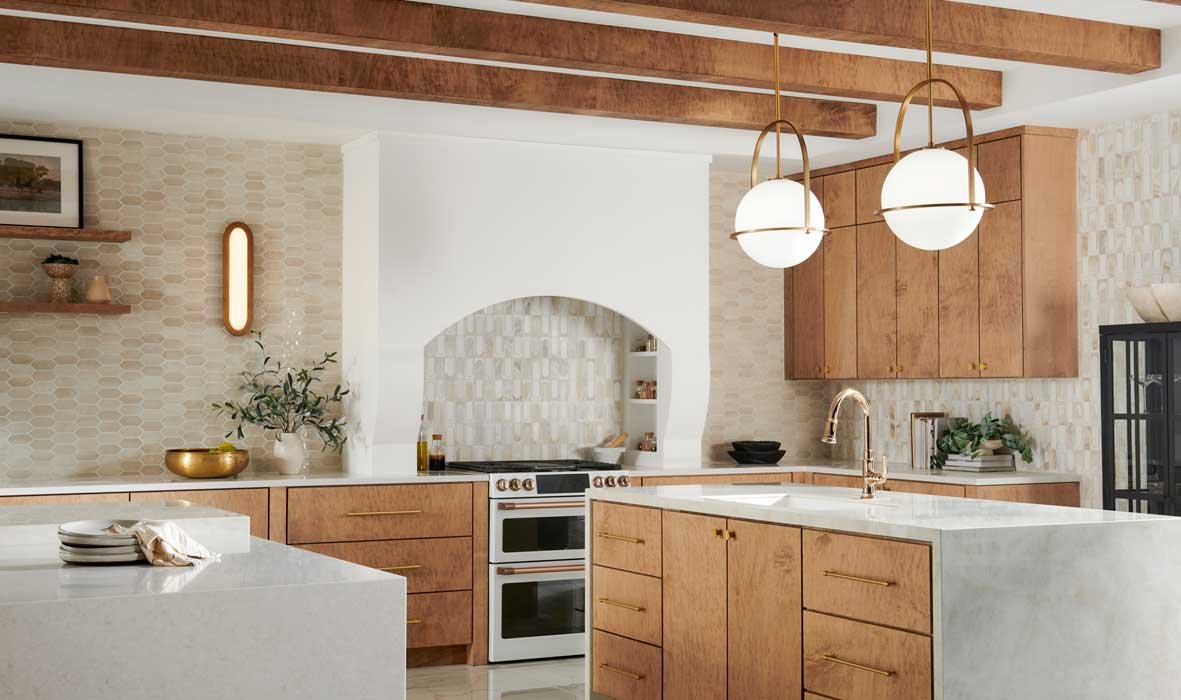Style Guide: Mid-Century Modern
Overview of Mid-Century Modern
The phrase 'Mid-Century Modern' refers to styles of architecture, product design, graphic design, and interior design that gained popularity in the middle of the 20th century.
While some modern home décor styles have come and gone over the years, mid-century modern remains a classic choice for both traditional and contemporary.
WHERE & WHEN?
Mid-Century Modern design saw its peak period in the United States of America from 1933 to 1965, and its impact continues to be on trend. This kind of design aims to combine elements from several cultures, including American, Scandinavian, and Japanese designs and influences, while also achieving a balance between natural and manufactured materials.
HOW?
Without being excessively cluttered or minimalist, its memorable highlights, neutral colour scheme, simple yet elegant lines, and distinctive design features can all contribute to the creation of a welcoming ambiance. The natural woods, metal accents, and glass accents of Mid-Century Modern furniture and design give any space a sensual quality while maintaining a minimalist aesthetic.
WHO?
Among the most well-known architects of the era include Walter Gropius, Philip Johnson, Richard Neutra, Frank Lloyd Wright, Rudolf Schindler, and Charles and Ray Eames.
Mid-Century Modern homes are designed to flow effortlessly from indoors to outdoors. The look is sleek and classy, where every element is considered and designed to create a sense of calm.
To create this look, you’ll need to know about materials, colours, shapes, furniture, and architecture used to style Mid-Century Modern homes.
Materials - In Mid-Century Modern homes, wooden furnishings in warm, rich tones like ebony, walnut, and teak take centre stage. Look to wooden sideboards, extendable dining tables, or style pieces like vases or candlestick holders to allow the timber to shine. Velvet and suede are your go-to materials for soft furnishings because they combine other textural features to create a comfortable haven.
For a luxurious look, one can incorporate mixed metals like brass, chrome, and gold with earthy accents like indoor plants and lots of natural light to anchor the area.
Colour Palette - The use of colour is essential to authentic mid-century design. During the optimistic post-war era that saw the turn of the century, colour was employed in innovative and ambitious ways.
In addition to rich emerald or olive greens, bold, statement blues, pinks, and yellows are to be expected, as are the classic brown tones of the mid-century. Mid-Century Modern design also heavily incorporates pattern, which unites bold visual contrast in wall paintings, area rugs, and pillows with playful geometric patterns.
Shapes - The key components of Mid-Century Modern style are juxtaposition and tension. Matching angular or geometric coffee tables, light fixtures, and artwork with distinctively curved or rounder couches and armchairs.
Creating attention-grabbing focus points in any room with statement pieces and layers.
Furniture - Non-traditional materials like plastics, vinyl, plywood, fibre glass, and stainless steel inspired imaginative design work are used when implementing Mid-Century Modern style. Multiple types of lines, smooth surfaces and crisp lines were used when designed tables and chairs,
frequently gives the furniture a sculpture-like appearance.
Usually, function and utility came before appearance and form of furniture. However, the designs frequently alternated between geometric and organic lines.
Architecture - The introduction of indoor and outdoor movement of Mid-Century Modern style; frequently, was accomplished by utilizing glass walls and carrying the flooring outside. Bold material combinations and textural contrasts, such as brick versus plastic or wood versus stone and panelling were applied when designing Mid-Century Modern homes.
Rather than using walls to define spaces, variations in ‘height’ and the placement of built-in seating and storage assisted. Living on two levels with built-in furniture: A simple, well-organized style. The use of organic curves into outer form and internal spaces was inspired by natural phenomena. investigation of visual pattern and colour.












